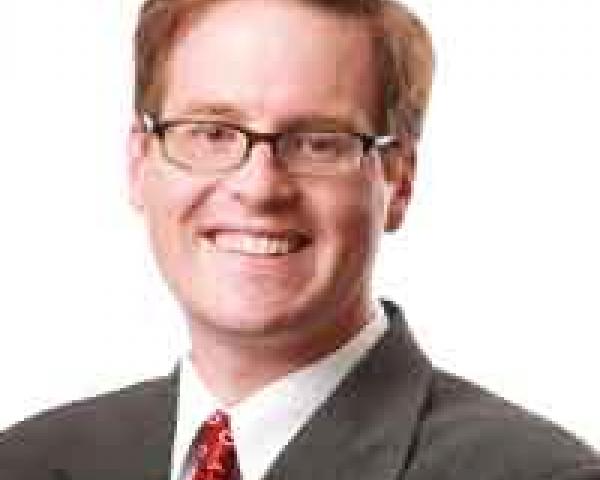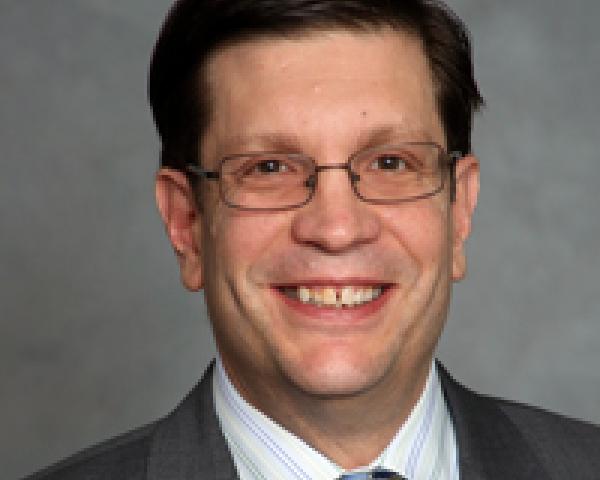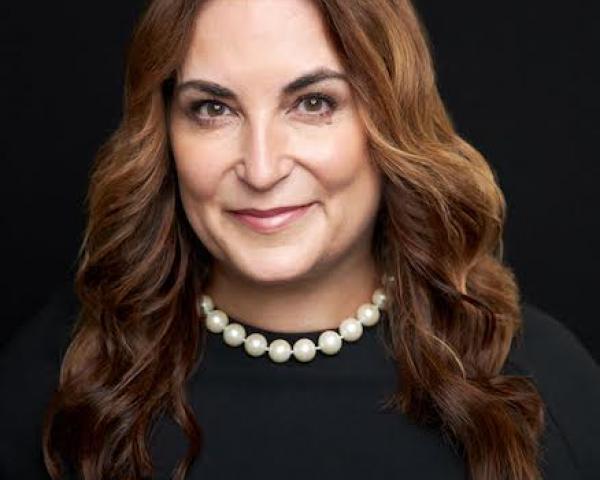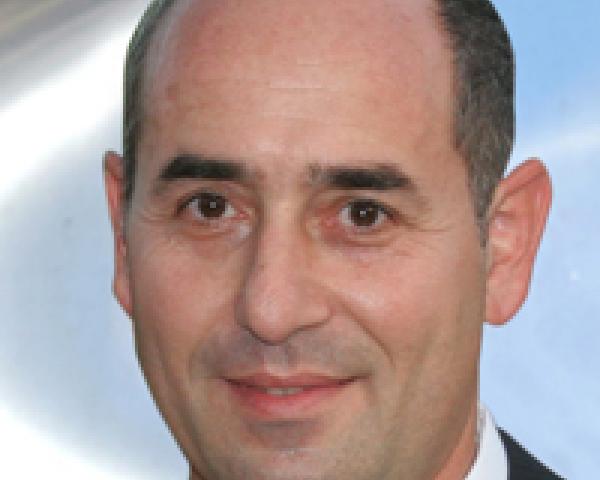What I Learned at Google (Part 2)
As the Google symposium showed, innovation can happen faster than we expect -- or slower. Here is how to get the timing right.

As the Google symposium showed, innovation can happen faster than we expect -- or slower. Here is how to get the timing right.

Get Involved
Our authors are what set Insurance Thought Leadership apart.
|
Partner with us
We’d love to talk to you about how we can improve your marketing ROI.
|

Paul Carroll is the editor-in-chief of Insurance Thought Leadership.
He is also co-author of A Brief History of a Perfect Future: Inventing the Future We Can Proudly Leave Our Kids by 2050 and Billion Dollar Lessons: What You Can Learn From the Most Inexcusable Business Failures of the Last 25 Years and the author of a best-seller on IBM, published in 1993.
Carroll spent 17 years at the Wall Street Journal as an editor and reporter; he was nominated twice for the Pulitzer Prize. He later was a finalist for a National Magazine Award.

We didn't intend to write a series on the symposium that Insurance Thought Leadership hosted at Google last week for C-suite executives of major companies and for regulators, but I want to build on the wonderful post yesterday by Iowa Insurance Commissioner Nick Gerhart, about the insights he picked up there. For me, the symposium underscored a crucial point about the pace of innovation -- how it can be faster than we expect at times but can also be slower.
And it's crucial to get the timing right.
The faster-than-expected part comes from a partner at one of the major Silicon Valley venture capital firms, which we visited as part of the symposium. All these firms track where entrepreneurs are seeing possibilities and where investments are happening, and the partner said that in all of 2014 the firm had been visited by exactly zero people hoping to innovate in insurance. Yet, just in the fourth quarter of 2015, the firm met with 60 companies looking to innovate in insurance.
Even as innovation has surged in fintech, in general, investment in insurtech start-ups has been minimal, about 1% of the total for fintech. But that may now be changing. Start-ups may accelerate the disruption in insurance.
You've been warned.
The slower-than-expected (at least for me) part comes from a consensus about driverless cars at the symposium. The group discussions at all five tables reached almost identical conclusions: that fully driverless cars will be feasible technologically in roughly four years but that it will be 10 before they are a major presence on the road.
In Silicon Valley-speak, saying something is 10 years out means it verges on science fiction. After all, 10 years at a pace set by Moore's Law means that you have some 30 times as much computing power available to you at no increase in cost -- if you need that much more power to make something happen, it's hard to know for sure that it works 10 years ahead of time.
But the concerns of the insurance C-suiters and the regulators were more prosaic. They felt that anyone who might be left behind because of driverless technology would kick up a fuss and that state governments, likely led by the legislatures, could intervene on behalf of constituents to slow the transition.
Perhaps insurance agents would fear the shift of auto insurance from a personal responsibility to a corporate one, shouldered by the manufacturers of the driverless cars or by operators of fleets of the cars -- if no person is involved in driving, how can an agent sell personal lines insurance?
Maybe car dealers, already fighting a rear guard action to prevent direct sales by manufacturers to consumers, would fear further loss of their intermediary role -- why would a fleet operator need a dealer to purchase of tens of thousands of cars?
Basically, think of anyone who might lose business because of driverless cars and the promised reduction in accidents -- parking garages, emergency rooms, whatever -- and you can see an obstacle. Not everyone will be explicit about their complaints. It's hard for an operator of prisons or funeral homes to demand more business. But our discussion groups were sure that opposition would surface in lots of ways and that politicians, always running for reelection, would lend support.
In fact, some technical concerns about driverless cars have surfaced in recent months. It turns out that Google cars have more accidents than human drivers do, albeit only minor accidents thus far and, most importantly, not because of any fault by Google -- careless people seem to bump into Google cars a lot at stoplights. Google also acknowledges that the cars would have caused at least some accidents if not for intervention by the highly trained humans sitting in the driver's seat. So, the technology still has a ways to go.
The pace of technical progress has still been faster than I expected when Chunka Mui and I published Driverless Cars: Trillions Are Up for Grabs nearly three years ago, and we staked out what was then a very aggressive position. The federal government recently stepped on the gas, if you will, by announcing a plan to spend $4 billion on driverless technology over the next decade and to reduce regulatory hurdles for adoption. The rationale -- which we have long predicted the government would have to adopt -- is that 25,000 lives could have been saved last year on U.S. highways if a mature form of the technology had been in use.
For me, then, the fundamental question from our symposium is: How do you position yourself for a technology that may be wildly important, yet whose timing is uncertain?
Two thoughts:
--A line that carries considerable currency in Silicon Valley is: "Never confuse a clear view with a short distance." Even if you're sure that something will happen as part of the transition to autonomous vehicles, keep in mind the issue of timing.
--Then think big, start small and learn fast -- a dictum that just happens to come from another book Chunka and I wrote, The New Killer Apps: How Large Companies Can Out-Innovate Start-Ups. That means you get in the game now, with as big a vision as you can conjure up for yourself or your company. Then you start experimenting to see what works and what doesn't -- while spending extremely little money. You make sure you can kill the experiments as soon as you gather the needed information -- no pilot projects allowed, at least not in the early days, and certainly no grand plans to go to market. And you keep iterating until both you and the market are ready. Then you start cashing checks.
Actually, one more thought: Consider coming to the Global Insurance Symposium that Nick and the fine folks in Des Moines (my dad's hometown) are putting on in late April. Nick is as forward-thinking a regulator as I've met, and there will be lots of people there who can help you on your journey, whether that involves driverless cars or something else entirely. I'll be there....
Get Involved
Our authors are what set Insurance Thought Leadership apart.
|
Partner with us
We’d love to talk to you about how we can improve your marketing ROI.
|

Paul Carroll is the editor-in-chief of Insurance Thought Leadership.
He is also co-author of A Brief History of a Perfect Future: Inventing the Future We Can Proudly Leave Our Kids by 2050 and Billion Dollar Lessons: What You Can Learn From the Most Inexcusable Business Failures of the Last 25 Years and the author of a best-seller on IBM, published in 1993.
Carroll spent 17 years at the Wall Street Journal as an editor and reporter; he was nominated twice for the Pulitzer Prize. He later was a finalist for a National Magazine Award.
From what I witnessed at a recent symposium, Google doesn't get bogged down in actuarial precision and could be a major force in insurance.

Get Involved
Our authors are what set Insurance Thought Leadership apart.
|
Partner with us
We’d love to talk to you about how we can improve your marketing ROI.
|

Nick Gerhart served as insurance commissioner of the state of Iowa from Feb. 1, 2013 to January, 2017. Gerhart served on the National Association of Insurance Commissioners (NAIC) executive committee, life and annuity committee, financial condition committee and international committee. In addition, Gerhart was a board member of the National Insurance Producer Registry (NIPR).
Why doesn't insurance take a different tack and focus on reducing the cost of risk? We’d lower the tension between insurers and clients.

Get Involved
Our authors are what set Insurance Thought Leadership apart.
|
Partner with us
We’d love to talk to you about how we can improve your marketing ROI.
|

David Bassi is an industry leader with experience in underwriting. risk management and analytics. He has led efforts at prominent global companies to integrate advances in data science, technology and the capital markets into traditional business models.
The election year, Obamacare and possible federalization of workers' comp could all hit the industry in 2016.

Get Involved
Our authors are what set Insurance Thought Leadership apart.
|
Partner with us
We’d love to talk to you about how we can improve your marketing ROI.
|

Kimberly George is a senior vice president, senior healthcare adviser at Sedgwick. She will explore and work to improve Sedgwick’s understanding of how healthcare reform affects its business models and product and service offerings.

Mark Walls is the vice president, client engagement, at Safety National.
He is also the founder of the Work Comp Analysis Group on LinkedIn, which is the largest discussion community dedicated to workers' compensation issues.
On-demand platforms have eliminated barriers to self-employment. But people need to be protected when operating as businesses.

Get Involved
Our authors are what set Insurance Thought Leadership apart.
|
Partner with us
We’d love to talk to you about how we can improve your marketing ROI.
|

Tim Attia is the CEO of Slice Labs; a technology company addressing challenges facing the on-demand economy. Prior to Slice, he worked with some of the largest global insurance carriers on technology and distribution. He started his career with a large technology and management consulting firm.
One of the 10 wellness plans relies on drugs specifically discouraged by the AMA. Another is 100% guaranteed to harm the workforce.

If corporate wellness didn't already exist, no one would invent it. In that sense, it's a little like communism, baseball, pennies or Outlook. After all, why would any company want to purchase programs that damage morale, reduce productivity, drive costs up...and don't work 90% to 95% of the time? And those are the results reported by wellness proponents. Those are the employers' problems, but the employers' problems become the employees' problems when employees are "voluntarily" forced to submit to programs that are likely to harm them. (As the New York Times recently pointed out, there is nothing voluntary about most of these programs.) Recently, the head of United Healthcare's (UHC) wellness operations (Optum), Seth Serxner, admitted that Optum's programs consciously ignore U.S. Preventive Services Task Force (USPSTF) screening guidelines. Rather than apologize, Serxner blamed employers for insisting on overscreening and overdiagnosing their own employees...and (by implication) overpaying for the privilege of doing so. "Our clients make us do it," were his exact words. We asked our own clients who use Optum about why they turned down Optum's generous offer to do more appropriate screenings at a lower price. None of them remember receiving such an offer. A UHC executive wrote and said we were making the company look bad. I said I would happily revise or even retract statements about the company if the executive could introduce me to just one single Optum customer -- one out of their thousands -- who recalls insisting on overscreening and overpaying. Never heard back.... United Healthcare isn't alone in harming employees. It is just the first company to admit doing so. It is also far from the worst offender, as the harms of its overscreening for glucose and cholesterol don't hold a candle to the ideas listed below, in increasing order of harms: #10 Provant We would say: "Someone should inform Provant that you are not supposed to drink eight glasses of water a day," except that we already did, and they didn't believe us. Obsessive hydration remains one of their core recommendations despite the overwhelming evidence that you should drink when you are thirsty.  By contrast, the New York Times, which has an Internet connection, writes the opposite:
By contrast, the New York Times, which has an Internet connection, writes the opposite:  #9 Cerner The employee who recorded this blood pressure is essentially dead. Cerner's diagnosis? Blood pressure "higher than what is ideal." Cerner's recommendation? "Talk to your healthcare provider." A real doctor's recommendation? "Call an ambulance. The guy barely has a pulse."
#9 Cerner The employee who recorded this blood pressure is essentially dead. Cerner's diagnosis? Blood pressure "higher than what is ideal." Cerner's recommendation? "Talk to your healthcare provider." A real doctor's recommendation? "Call an ambulance. The guy barely has a pulse."  This is not a random mistake. This is the front cover of the company's brochure. #8 Nebraska/Health Fitness Corp. USPSTF screening age recommendations aren't minimums. They are optimums, the ages at which screening benefits might start to exceed harms, even if they still fall far short of costs. Otherwise, you are taking way too much risk. This is especially true for colonoscopies, one of this program's favorite screens -- complications from the test itself can be very serious. Your preventive coverage is not supposed to be "greater than healthcare reform guidelines." That's like rounding up twice the number of usual suspects. And you aren't supposed to waive "age restrictions." That's like a state waiving minimum "age restrictions" to get a driver's license.
This is not a random mistake. This is the front cover of the company's brochure. #8 Nebraska/Health Fitness Corp. USPSTF screening age recommendations aren't minimums. They are optimums, the ages at which screening benefits might start to exceed harms, even if they still fall far short of costs. Otherwise, you are taking way too much risk. This is especially true for colonoscopies, one of this program's favorite screens -- complications from the test itself can be very serious. Your preventive coverage is not supposed to be "greater than healthcare reform guidelines." That's like rounding up twice the number of usual suspects. And you aren't supposed to waive "age restrictions." That's like a state waiving minimum "age restrictions" to get a driver's license.  Yet this program won a C. Everett Koop Award for excellence in wellness, not to mention the unwavering support and admiration of leading wellness apologist Ron Goetzel. #7-#6 (tie) ShapeUp and Wellness Corporate Solutions Both these outfits pitch exactly the opposite of what you are supposed to do in weight control: unhealthy crash dieting. Attaching money to this idea and setting a start date make the plan even worse: along with crash-dieting during these eight weeks, you're encouraging employees to binge before the initial weigh-in. Here is ShapeUp:
Yet this program won a C. Everett Koop Award for excellence in wellness, not to mention the unwavering support and admiration of leading wellness apologist Ron Goetzel. #7-#6 (tie) ShapeUp and Wellness Corporate Solutions Both these outfits pitch exactly the opposite of what you are supposed to do in weight control: unhealthy crash dieting. Attaching money to this idea and setting a start date make the plan even worse: along with crash-dieting during these eight weeks, you're encouraging employees to binge before the initial weigh-in. Here is ShapeUp:  Here is Wellness Corporate Solutions:
Here is Wellness Corporate Solutions:  Both also made up outcomes. In ShapeUp's case, the company had to rescind its "findings" after the customer, Highmark, skewered the company in the press. And neither seems to care that corporate weight control programs are proven not to work. #5 Aetna In addition to its wellness program that collects employee DNA (partnered, ironically, with a company called Newtopia) and then makes up claims about savings, Aetna owns the distinction of launching the only wellness program whose core drugs are specifically editorialized against in the Journal of the American Medical Association. This would literally be the most harmful wellness program ever, except that the only employees being harmed are (1) obese employees who (2) answer the phone when their employer's health plan calls them to pitch these two drugs; (3) who have a doctor who would willingly prescribe drugs that almost no other doctors will prescribe, because of their side effect profile; and (4) who don't Google the drugs. Presumably, this combination is a very low percentage of all employees. The good news is that the drugs, Belviq and Qsymia, should be off the market in a couple of years because almost no one wants to take them, so the harms of this Aetna program should be self-limited. #4 Star Wellness Star Wellness offers a full range of USPSTF D-rated screens. "D" is the lowest USPSTF rating and means harms exceed benefits. Star gets extra credit for being the first wellness vendor to sell franchises. All you need is a background in sales or "municipal administration" plus $67,000 and five days of training, and you, too, can poke employees with needles and lie about your outcomes. Is this a great country, or what? Also, the company's vaccination clinic features Vitamin B12 shots. We don't know which is more appalling--routinely giving employees Vitamin B12 shots or thinking Vitamin B12 is a vaccine.
Both also made up outcomes. In ShapeUp's case, the company had to rescind its "findings" after the customer, Highmark, skewered the company in the press. And neither seems to care that corporate weight control programs are proven not to work. #5 Aetna In addition to its wellness program that collects employee DNA (partnered, ironically, with a company called Newtopia) and then makes up claims about savings, Aetna owns the distinction of launching the only wellness program whose core drugs are specifically editorialized against in the Journal of the American Medical Association. This would literally be the most harmful wellness program ever, except that the only employees being harmed are (1) obese employees who (2) answer the phone when their employer's health plan calls them to pitch these two drugs; (3) who have a doctor who would willingly prescribe drugs that almost no other doctors will prescribe, because of their side effect profile; and (4) who don't Google the drugs. Presumably, this combination is a very low percentage of all employees. The good news is that the drugs, Belviq and Qsymia, should be off the market in a couple of years because almost no one wants to take them, so the harms of this Aetna program should be self-limited. #4 Star Wellness Star Wellness offers a full range of USPSTF D-rated screens. "D" is the lowest USPSTF rating and means harms exceed benefits. Star gets extra credit for being the first wellness vendor to sell franchises. All you need is a background in sales or "municipal administration" plus $67,000 and five days of training, and you, too, can poke employees with needles and lie about your outcomes. Is this a great country, or what? Also, the company's vaccination clinic features Vitamin B12 shots. We don't know which is more appalling--routinely giving employees Vitamin B12 shots or thinking Vitamin B12 is a vaccine.  #3 Angioscreen Angioscreen doesn't have the most USPSTF D-rated screens. In fact, it offers only one screen in total, for carotid artery stenosis. That screen gets a D grade from USPSTF, giving Angioscreen the unique distinction of being the only vendor 100% guaranteed to harm your workforce.
#3 Angioscreen Angioscreen doesn't have the most USPSTF D-rated screens. In fact, it offers only one screen in total, for carotid artery stenosis. That screen gets a D grade from USPSTF, giving Angioscreen the unique distinction of being the only vendor 100% guaranteed to harm your workforce.  Angioscreen's other distinction is that the company admits right on its website that this screen is a bad idea. Angioscreen is probably the only non-tobacco company in America to admit you are better off not using its product. #2 Total Wellness In addition to the usual assortment of D-rated tests, the company offers screens that the USPSTF hasn't even rated, because it never, ever occurred to the USPSTF that anyone would use these tests for mass screening of patients or employees. Criticizing the USPSTF for not rating these "screens" (CBCs and Chem-20s) would be like criticizing Sanofi-Aventis for not warning against taking Ambien after parking your car on a railroad crossing. #1 HealthFair Let's leave aside the fact that the majority of its other screens are harmful and focus on its screening for H.pylori, the strain of bacteria associated with ulcers. Visit our full treatment here. In a nutshell, the majority of us harbor H.pylori--without symptoms. It may even be beneficial. The screening test is expensive and notoriously unreliable, and the only way to get rid of H.pylori is with some very powerful antibiotics, a treatment rarely even used on patients with symptoms, because of its inconvenience, ineffectiveness and potential long-term side-effects. A Modest Proposal So how should we as a country protect employees from these harms? Our policy recommendation is always the same and very non-intrusive. We aren't saying wellness vendors shouldn't be allowed to harm employees. That proposal would be too radical to ever pass Congress. If it did, the Business Roundtable would pressure the White House again, to preserve the hard-earned right to "medicalize" the workplace and show employees who's boss. Instead, we recommend merely a disclosure requirement. The harms of screens or (in United Healthcare's case) screening intervals that don't earn at least a "B" from USPSTF should be disclosed to employees, and employees should get a chance to "opt out" into something that isn't harmful (like Quizzify, perhaps?) without suffering financial consequences. Call us cockeyed optimists, but we don't think employers should be able to force employees to choose between harming themselves and paying fines.
Angioscreen's other distinction is that the company admits right on its website that this screen is a bad idea. Angioscreen is probably the only non-tobacco company in America to admit you are better off not using its product. #2 Total Wellness In addition to the usual assortment of D-rated tests, the company offers screens that the USPSTF hasn't even rated, because it never, ever occurred to the USPSTF that anyone would use these tests for mass screening of patients or employees. Criticizing the USPSTF for not rating these "screens" (CBCs and Chem-20s) would be like criticizing Sanofi-Aventis for not warning against taking Ambien after parking your car on a railroad crossing. #1 HealthFair Let's leave aside the fact that the majority of its other screens are harmful and focus on its screening for H.pylori, the strain of bacteria associated with ulcers. Visit our full treatment here. In a nutshell, the majority of us harbor H.pylori--without symptoms. It may even be beneficial. The screening test is expensive and notoriously unreliable, and the only way to get rid of H.pylori is with some very powerful antibiotics, a treatment rarely even used on patients with symptoms, because of its inconvenience, ineffectiveness and potential long-term side-effects. A Modest Proposal So how should we as a country protect employees from these harms? Our policy recommendation is always the same and very non-intrusive. We aren't saying wellness vendors shouldn't be allowed to harm employees. That proposal would be too radical to ever pass Congress. If it did, the Business Roundtable would pressure the White House again, to preserve the hard-earned right to "medicalize" the workplace and show employees who's boss. Instead, we recommend merely a disclosure requirement. The harms of screens or (in United Healthcare's case) screening intervals that don't earn at least a "B" from USPSTF should be disclosed to employees, and employees should get a chance to "opt out" into something that isn't harmful (like Quizzify, perhaps?) without suffering financial consequences. Call us cockeyed optimists, but we don't think employers should be able to force employees to choose between harming themselves and paying fines.
Get Involved
Our authors are what set Insurance Thought Leadership apart.
|
Partner with us
We’d love to talk to you about how we can improve your marketing ROI.
|

Al Lewis, widely credited with having invented disease management, is co-founder and CEO of Quizzify, the leading employee health literacy vendor. He was founding president of the Care Continuum Alliance and is president of the Disease Management Purchasing Consortium.
No, UBI is not a bubble, but the business model is wrong. Neither the insurant nor the insurer gets enough value to make UBI succeed.

Get Involved
Our authors are what set Insurance Thought Leadership apart.
|
Partner with us
We’d love to talk to you about how we can improve your marketing ROI.
|

Ami Mintzer is the head of big data and client development at Viasat Group, a leading telematics technology and service provider in Europe. Before joining Viasat Group, Mintzer led the sales and business development at MyDrive Solutions.
Typically, we expect luxury brands to foster autonomous technology, but mid-market auto brands are making announcements.

Get Involved
Our authors are what set Insurance Thought Leadership apart.
|
Partner with us
We’d love to talk to you about how we can improve your marketing ROI.
|

Thomas Hallauer has gained 15 years of operational marketing experience in the domain of telematics and location-based services. He is an expert in new products and services notably in the automotive, motor insurance, navigation and positioning industries.
Many, including agents, think digitization will replace them. Not so. Used right, technology enhances agents' relationships with clients.

Get Involved
Our authors are what set Insurance Thought Leadership apart.
|
Partner with us
We’d love to talk to you about how we can improve your marketing ROI.
|

Andrea Masterton is the corporate marketing director for e-SignLive by Vasco. She oversees industry marketing strategy, market awareness and demand generation within key industry segments, specifically insurance and financial services.